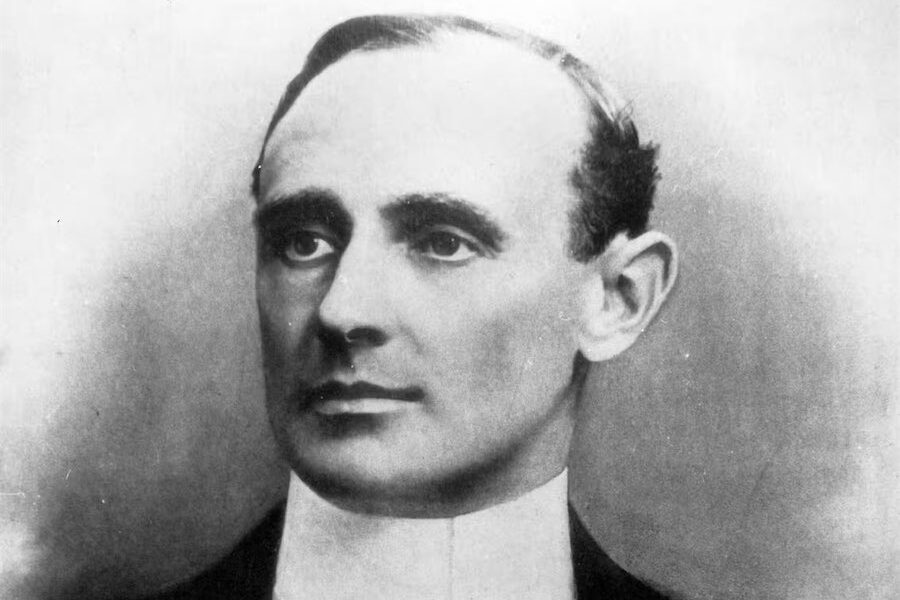
“Australians are not naturally monarchists – it’s the model that matters. Polling and research have consistently shown that more of us are for a republic than against it,” writes PETER FITZSIMONS, as the Australian Republic Movement launches its new model for a republic.
THE primary barrier to Australia becoming a republic is not the British monarchy, but uncertainty.

Australians want to know what the credible alternative model is. As the peak body advocating for an Australian as our Head of State, the Australian Republic Movement’s mission must be to advance support for real, workable referendum-winning change.
To win that change, a referendum on the republic must achieve a double majority; a majority of votes nationally and a majority in four out of six states. So any proposition for a republic must be capable of securing majority support in advance of any referendum campaign.
Australians are not naturally monarchists – it’s the model that matters. Polling and research have consistently shown that more of us are for a republic than against it. But when voters are asked to support a general proposition about a republic it achieves a bare majority. We know the model is the main variable because when asked about specific proposals, support varies dramatically; 92 per cent of Australians are open to the idea of a republic, with only 8 per cent opposed to any form of change.
We tested this view extensively over 2020 and 2021. The ARM consulted widely, surveyed our members and registered supporters, undertook in-depth nationally representative polling, ran focus groups and met with community and political leaders across the country. We heard from more than 10,000 Australians, including more than 1300 supporters who sent us submissions and the thousands of members who took part in internal surveys. We listened carefully and we’re persuaded that with the right model, Australians will back change – convincingly.
This research informed the ARM’s national committee’s approach, first by providing a comprehensive understanding of supporter and public opinion and then by providing tangible proposals that could be developed into policy.
The national committee spent the first half of 2021 analysing the results of that consultation and research, following up with respondents and stakeholders for further information and developing that into a cohesive policy framework.
The framework was then drafted into constitutional amendments by the ARM’s constitutional advisory body comprising 10 leading constitutional law experts from across the country, including Prof Helen Irving, Scientia Professor George Williams and consulting closely with leading authorities such as Prof Anne Twomey.
From the outset we have been working towards a position on constitutional improvements that will (i) unite the overwhelming majority of supporters, (ii) be capable of achieving the necessary level of support in the federal parliament to bring forward a referendum vote and (iii) also be likely to win public support at a referendum.
It has not been easy – no proposal for reform previously proposed has ever had the level of support required to achieve those three conditions. But we can now move forward with a positive alternative to the status quo, one that is achievable and that will finally deliver an Australian as our Head of State.
It has been clear for decades that Australians want the final say about who our Head of State is. Our model – the Australian Choice Model – delivers a genuine choice of Australia’s most respected and trusted citizens so that all the Australian people can vote in a Head of State who represents us all. For the first time, Australians – all Australians – will have a say in who represents us as Head of State.
To ensure that there is manageable choice between our most respected and trusted citizens, Australia’s parliaments will nominate a short list of up to 11 candidates – one from each state and territory parliament and up to three by the federal parliament. This will ensure strong representation from across the country and a genuine choice. Sitting parliamentarians will be prohibited from standing for election.
The Head of State would be responsible for appointing as Prime Minister the person who has majority support in the House of Representatives, ensuring that the commission of a Prime Minister ends if another person commands that support, or calling an election if no-one can obtain that support.
The Head of State will not have the power to dismiss a Prime Minister who retains majority support in the House of Representatives, but would have the power to summon the House of Representatives to determine if the Prime Minister retains that support. They will act on the advice of the government on all other matters.
This is sound policy that will not just change but significantly improve Australia’s Constitution. Our research found 73 per cent of Australians would vote for such improvements at a referendum.
Further detailed information about the improvements proposed by the ARM and research supporting it can be found at republic.org.au/policy
This is an historic moment in the history of the movement for an Australian republic.
Peter FitzSimons AM is the chair of the Australian Republic Movement.
Who can be trusted?
In a world of spin and confusion, there’s never been a more important time to support independent journalism in Canberra.
If you trust our work online and want to enforce the power of independent voices, I invite you to make a small contribution.
Every dollar of support is invested back into our journalism to help keep citynews.com.au strong and free.
Thank you,
Ian Meikle, editor





Leave a Reply